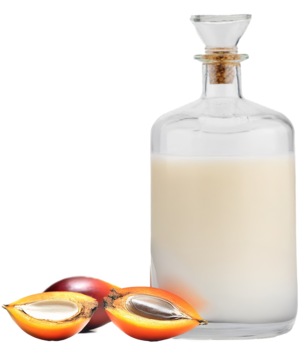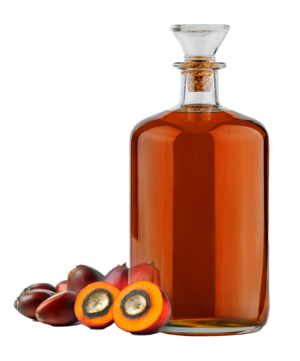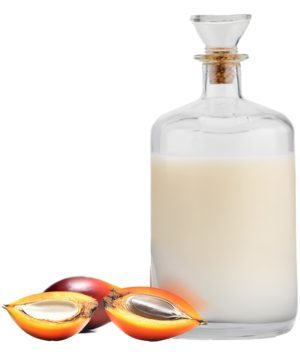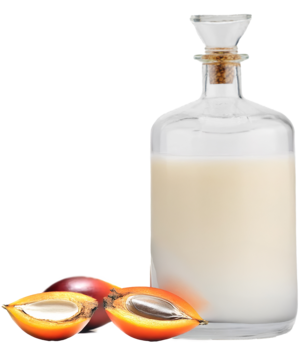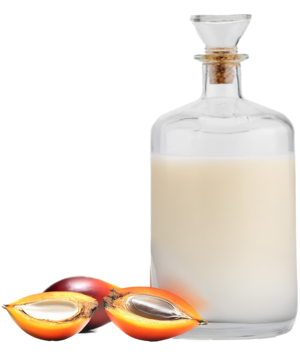Our Palm oil qualities
We carry Palm oil in the following qualities for you
Usage
|
Cosmetics |
Food |
Pharmaceutics |
|
|---|---|---|---|
| Palm oil refined SG CU-RSPO SCC-818895 | |||
| Palm oil hydrogenated SG CU-RSPO SCC-818895 | |||
| Red Palm oil (Palmolein) SG CU-RSPO SCC-818895 | |||
| Palmolein refined IV 64 SG CU-RSPO SCC-818895 | |||
| Organic palm oil refined SG CU-RSPO SCC-818895 | |||
| Organic palm oil refined IP CU-RSPO SCC-818895 |
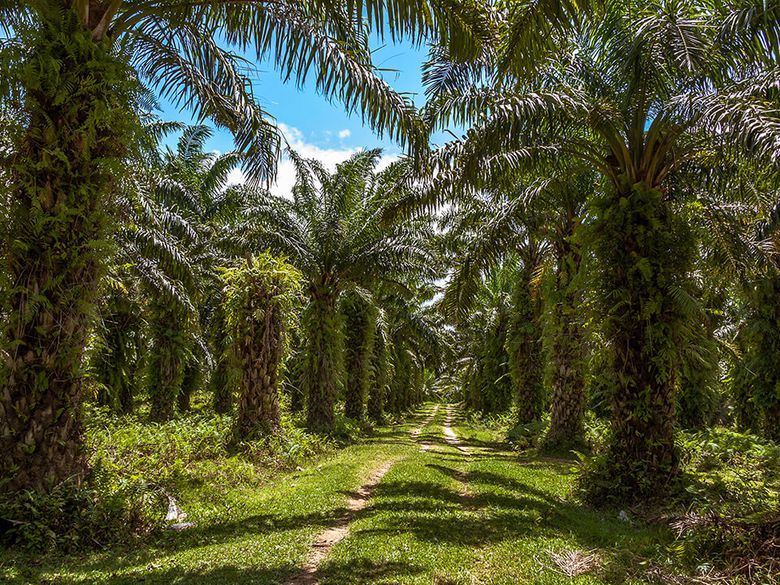
Oil palm & oil palm fruit
Palm oil, also known as palm fat, is obtained from the flesh of the fruit of the oil palm (Elaeis guineensis) by pressing. The crude oil is then refined. The oil palm reaches a height of up to 20 m and requires 24-27°C for optimal growth and bears about 50 fruits for the first time after 4 years. The bunches contain up to 2000 individual fruits, with a hard kernel surrounded by soft fruit flesh (oil content 40-65%). Palm kernel oil is extracted from the kernels.
Would you like to be informed about the general market situation of Palm oil and our other products?
subscribe to market reportCultivation & yield
Oil palms are three times as productive as rapeseed and take up about 1/6 of the area of soya for the same yield. The main areas of cultivation today are Western Africa, Indonesia, Malaysia, Philippines, Brazil and Colombia. The extraction of the raw palm oil from the fruit flesh which cannot be stored is done by sterilizing the berries, removing the seeds, boiling, pressing and then and cleaning. The orange-red colored crude oil, which has a characteristic odor (violet-like) and a pleasantly sweetish taste and is solid at room temperature, is usually refined to a white to yellowish solid fat.
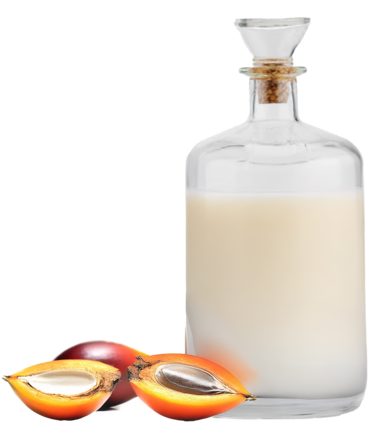
Background / history
The origin of the oil palm is probably in the tropics of East America and West Africa. It is proven that as early as the 15th century, the inhabitants of West and Central Africa extracted the oil from the fruit. Oil palms were first reported in Europe in 1443 by the Portuguese navigator Gil Eannes. It was not until 1850 that the oil was imported into Europe in order to compensate for the growing population's need for fat. With the invention of margarine around 1869 and the increasing use of vegetable fats, demand rose again. This resulted in the increased cultivation of the plant, so that today the crops are spread over the tropics all over the world.
25
kg
Bag
General durability: box 12 months, drum 18 months
Nutritional values & composition
| Nutritional value | (per 100g) |
| Energy | 3,700 kJ / 900 kcal |
| Fat | 100 g |
| Saturated fatty acids | 48 g |
| Monounsaturated fatty acids | 41 g |
| Polyunsaturated fatty acids | 11 g |
Fatty acids ratio
Composition
| C16:0 Palmitic acid | 39.3 – 47.5 % |
| C18:1 Oleic acid | 36 – 44 % |
| C18:2 Linoleic acid | 8 – 12 % |
You want to buy Palm oil?
Request now free of charge and without obligation from Gustav Heess. We deliver Palm oil ...
- worldwide
- fast
- reliable
We offer Palm oil in the following packaging units:
-
25
kg
Bag
